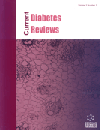
Full text loading...
We use cookies to track usage and preferences.I Understand
The role of 3-phosphoinositide-dependent kinase 1 (PDK1) has been well-documented in the development of diabetes. This review offers a thorough examination of its composition and associated routes, specifically focusing on insulin signaling and glucose processing. By examining the precise connection between PDK1 and diabetes, various strategies specifically targeting PDK1 were also investigated. Additionally, recent discoveries from mouse models were compiled where PDK1 was knocked out in certain tissues, which demonstrated encouraging outcomes for focused treatments despite the absence of any currently approved clinical PDK1 activators. Moreover, the dual nature of PDK1 activation was discussed, encompassing both anti-diabetic and pro-oncogenic effects. Hence, the development of a PDK1 modifier is of utmost importance, as it can activate anti-diabetic pathways while inhibiting pro-oncogenic pathways, thus aiding in the treatment of diabetes. In general, PDK1 presents a noteworthy opportunity for future therapeutic strategies in the treatment of diabetes.

Article metrics loading...

Full text loading...
References


Data & Media loading...

